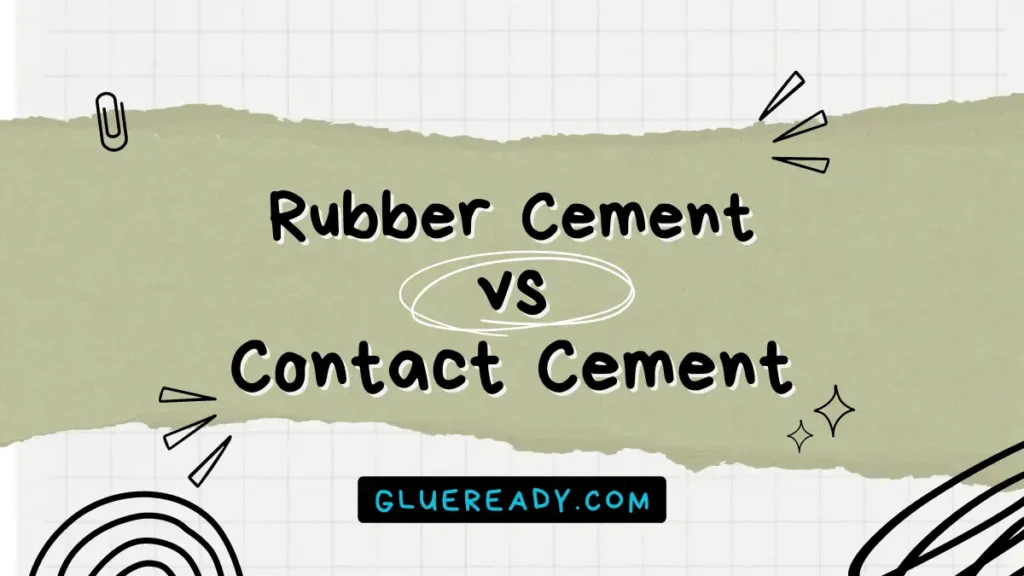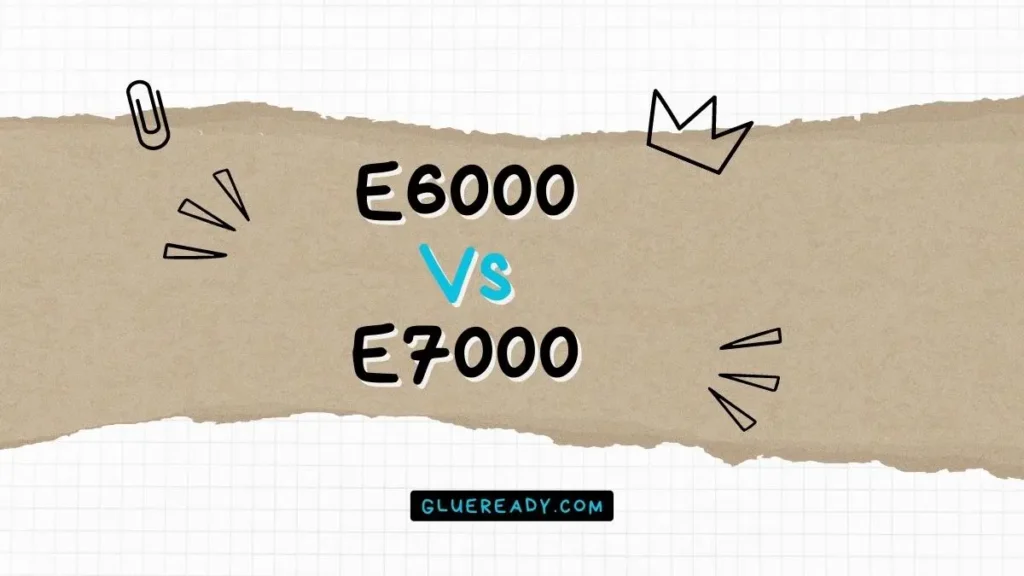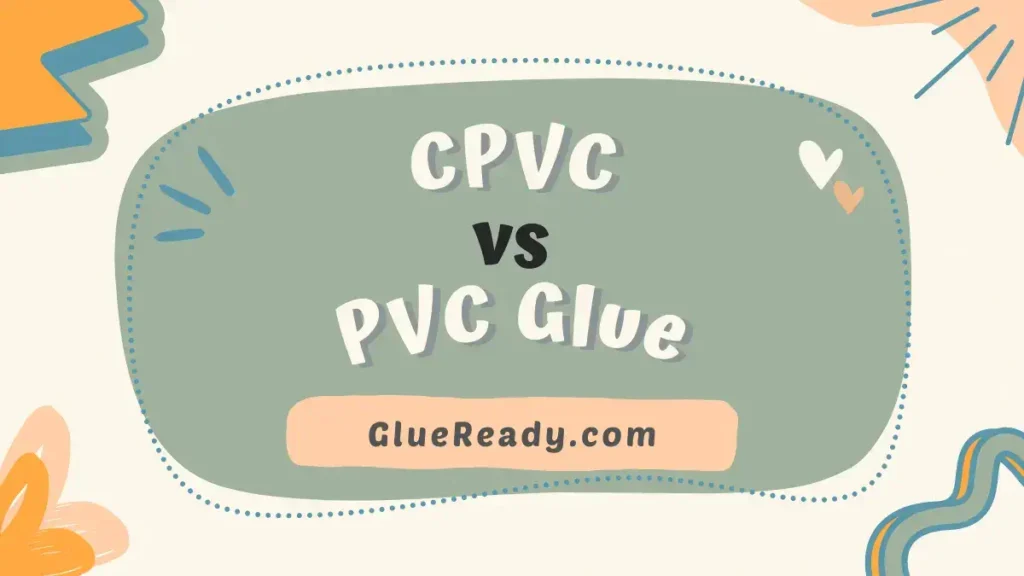E6000 vs Shoe Goo | Detailed Comparison

Sometimes you might need to repair shoes that you love with glue if you want to keep them in good shape.
Glues are not all the same, and some might work better on certain types of shoes and materials than others.
Shoe Goo is used mainly for footwear and similar items, whereas E6000 is primarily used for projects with high heat, abrasiveness, or impactful conditions.
The purpose of this article is to provide you with valuable insights to help you decide between E6000 vs Shoe Goo for your shoe repair needs.
Read More: E6000 vs Gorilla Glue
Overview of E6000 Adhesive
E6000 is a popular multipurpose adhesive that is known for its versatility and strong bonding capabilities.
It is composed of high-grade polyurethane and offers superior bonding capabilities.
It can stick to wood, metal, ceramic, glass, rubber, leather, vinyl, plastic, and many other things.
It is also resistant to temperature, moisture, UV radiation, abrasion, and impact. It is ideal for use in any condition and for heavy-duty gluing tasks.

E6000 Pros
- Very strong and durable
- Bonds to many materials
- Resistant to temperature, moisture, UV radiation, abrasion, and impact
- Ideal for heavy-duty gluing tasks
E6000 Cons
- More expensive than Shoe Goo
- More difficult to use and messier than Shoe Goo
- Less flexible than Shoe Goo
- It might emit harmful fumes when curing
Overview of Shoe Goo Adhesive
Shoe Goo is a popular adhesive specifically formulated for shoe repairs.
It is known for its ability to bond and fix various shoe materials, making it a go-to product for repairing and extending the life of footwear.
It is versatile, widely available, and relatively cheap glue that can fix various kinds of shoes and boots.
It gives a certain level of flexibility to the shoe and usually works best for filling holes in the heels.
Besides being a good adhesive, it is also useful for filling and repairing small holes in shoes and boots.

Shoe Goo Pros
- Very flexible and provides a good seal
- Easy to use and less messy than E6000
- Cheaper than E6000
- Designed for footwear and similar items
Shoe Goo Cons
- Less strong than E6000
- Bonds to fewer materials
- Less resistant to external factors
- Might not last as long as E6000
Is Shoe Goo the Same as E6000?
No, Shoe Goo is not the same as E6000. They are both types of glue that can be used to fix shoes, but they have different features, pros and cons, and applications.
E6000 is generally stronger, more versatile, and more resistant than Shoe Goo, but it is also more expensive, more difficult to use, and less flexible than Shoe Goo.
Shoe Goo is mainly designed for footwear and similar items, and it provides a better seal for holes and cracks, but it is less strong, less durable, and less resistant than E6000.
E6000 vs Shoe Goo Comparison Table
| Feature | E6000 | Shoe Goo |
| Strength | Very strong and durable | Less strong than E6000 |
| Materials | Bonds to many materials | Bonds to fewer materials |
| Usage | Ideal for heavy-duty gluing tasks | Designed for footwear and similar items |
| Flexibility | Less flexible than Shoe Goo | Very flexible and provides a good seal |
| Finish | Black, white, and clear finishes | Clear finish |
| Odor | Strong | Mild |
| Resistance | Resistant to temperature, moisture, UV radiation, abrasion, and impact | Less resistant to external factors |
| Tube sizes | 0.18 fl oz to 10.2 fl oz and one or 5-gallon drums | 0.18 fl oz, one fl oz, and three fl oz |
Which One to Use? E6000 or Shoe Goo?
The choice between E6000 and Shoe Goo ultimately depends on your specific needs and the nature of your project.
If shoe repair is your primary focus, Shoe Goo may be the better choice. For more versatile applications or projects beyond shoes, E6000 could be a suitable option.
Here are some considerations to help you decide:
Shoe Repair
If your main purpose is to repair shoes or other footwear items, Shoe Goo is specifically formulated for that application.
It offers excellent adhesion for bonding rubber, leather, and fabric commonly found in shoes. Shoe Goo’s composition and flexibility make it a reliable choice for shoe repairs.
Versatility
If you require an adhesive that can be used for various materials and applications beyond shoes, E6000 offers greater versatility.
It is an industrial-grade adhesive that can bond metals, plastics, wood, and more. If you have a broader range of projects in mind, E6000 may be the better option.
Flexibility
Consider the level of flexibility required for your project. E6000 is known for its high flexibility, even after drying.
If your project involves movement or flexibility, such as attaching components that might experience vibrations, E6000’s flexibility may be advantageous.
Shoe Goo, while somewhat flexible, tends to be stiffer once it cures.
Drying Time
Take into account the time frame you have for your project. The fully cure time for E6000 is typically 24 to 72 hours.
If you need a quicker turnaround, Shoe Goo usually dries within 24 hours.
However, note that thicker applications or colder temperatures may require additional drying time for both adhesives.
Odor Sensitivity
If you are sensitive to strong odors, consider that E6000 has a distinct chemical odor that can be quite strong.
Shoe Goo also has an odor but is generally milder. Ensure that you have proper ventilation when working with adhesives in enclosed spaces.
Frequently Asked Questions about E6000 and Shoe Goo
Can You Use E6000 Glue on Shoes?
Yes, you can use E6000 glue on shoes. E6000 is a high-performance industrial glue that can bond well with various types of shoes and materials, such as rubber, leather, vinyl plastic, and more.
How Long Does E6000 Take to Dry on Shoes?
E6000 takes about 24 hours to dry completely on shoes. However, it might take longer, depending on the temperature and humidity of the environment. You should also avoid moving or wearing the shoes until the glue is fully cured.
Can I Use E6000 or Shoe Goo on Leather Shoes?
Yes, both E6000 and Shoe Goo can bond well with leather shoes. However, you might want to test a small area first before applying the glue to the whole shoe.
Can I Use E6000 or Shoe Goo on Canvas Shoes?
Yes, both E6000 and Shoe Goo can work on canvas shoes. However, you might want to be careful not to apply too much glue as it might soak through the fabric or make it stiff.
Can I Use E6000 or Shoe Goo on Suede Shoes?
No, I do not recommend using E6000 or Shoe Goo on suede shoes. They might damage the texture or color of the suede or leave a visible mark.
Can I Use E6000 or Shoe Goo on Rubber Shoes?
Yes, both E6000 and Shoe Goo can bond well with rubber shoes. However, you might want to roughen the surface of the rubber first with sandpaper or a file to improve the adhesion.
Can I Use E6000 or Shoe Goo on Plastic Shoes?
Yes, both E6000 and Shoe Goo can stick to plastic shoes. However, you might want to check the type of plastic first, as some plastics might not be compatible with these glues.
Final Thoughts
E6000 and Shoe Goo are both types of glue that can be used to fix shoes. However, they have different features, pros and cons, and applications. Depending on your needs and preferences, you might choose one over the other.
If you want a stronger, more durable, and more versatile glue that can bond to many materials and withstand harsh conditions, you might go for E6000.
However, if you want a more flexible, easier-to-use, and cheaper glue that can provide a better seal for holes and cracks in your shoes or boots, you might go for Shoe Goo.
I hope this E6000 vs Shoe Goo comparison has helped you decide which glue is better for your shoes. If you have any questions or comments, feel free to leave them below. I would love to hear from you.






